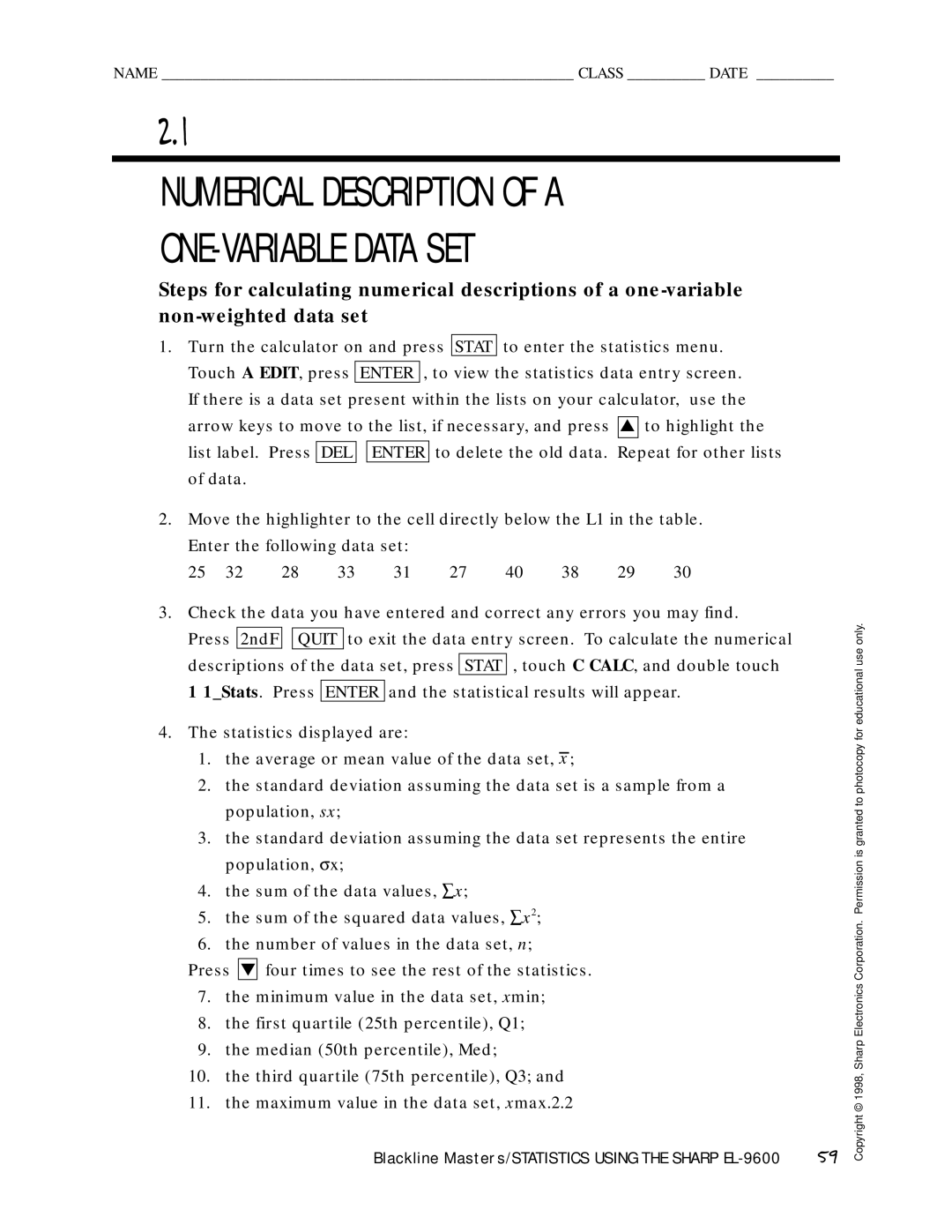
NAME _____________________________________________________ CLASS __________ DATE __________
2.1
NUMERICAL DESCRIPTION OF A
ONE-VARIABLE DATA SET
Steps for calculating numerical descriptions of a
1.Turn the calculator on and press STAT to enter the statistics menu. Touch A EDIT, press ENTER , to view the statistics data entry screen. If there is a data set present within the lists on your calculator, use the arrow keys to move to the list, if necessary, and press ▲ to highlight the list label. Press DEL ![]()
![]() ENTER to delete the old data. Repeat for other lists of data.
ENTER to delete the old data. Repeat for other lists of data.
2.Move the highlighter to the cell directly below the L1 in the table.
Enter the following data set: |
|
|
|
|
| ||||
25 | 32 | 28 | 33 | 31 | 27 | 40 | 38 | 29 | 30 |
3.Check the data you have entered and correct any errors you may find.
Press 2ndF ![]()
![]() QUIT to exit the data entry screen. To calculate the numerical descriptions of the data set, press STAT , touch C CALC, and double touch
QUIT to exit the data entry screen. To calculate the numerical descriptions of the data set, press STAT , touch C CALC, and double touch
11_Stats. Press ENTER and the statistical results will appear.
4.The statistics displayed are:
1.the average or mean value of the data set, x ;
2.the standard deviation assuming the data set is a sample from a population, sx;
3.the standard deviation assuming the data set represents the entire population, σ x;
4.the sum of the data values, ∑ x;
5.the sum of the squared data values, ∑ x2;
6.the number of values in the data set, n;
Press ▼ four times to see the rest of the statistics.
7.the minimum value in the data set, xmin;
8.the first quartile (25th percentile), Q1;
9.the median (50th percentile), Med;
10.the third quartile (75th percentile), Q3; and
11.the maximum value in the data set, xmax.2.2
Blackline Masters/STATISTICS USING THE SHARP | 59 |
Copyright © 1998, Sharp Electronics Corporation. Permission is granted to photocopy for educational use only.
